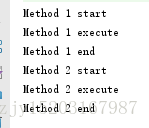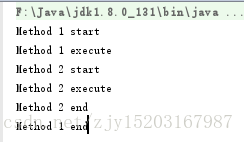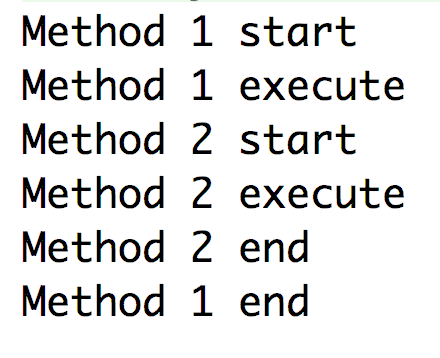1.为什么要使用synchronized
在并发编程中存在线程安全问题,主要原因有:1.存在共享数据 2.多线程共同操作共享数据。关键字synchronized可以保证在同一时刻,只有一个线程可以执行某个方法或某个代码块,同时synchronized可以保证一个线程的变化可见(可见性),即可以代替volatile。
2.实现原理
synchronized可以保证方法或者代码块在运行时,同一时刻只有一个方法可以进入到临界区,同时它还可以保证共享变量的内存可见性
3.synchronized的三种应用方式
Java中每一个对象都可以作为锁,这是synchronized实现同步的基础:
- 普通同步方法(实例方法),锁是当前实例对象 ,进入同步代码前要获得当前实例的锁
- 静态同步方法,锁是当前类的class对象 ,进入同步代码前要获得当前类对象的锁
- 同步方法块,锁是括号里面的对象,对给定对象加锁,进入同步代码库前要获得给定对象的锁。
4.synchronized的作用
Synchronized是Java中解决并发问题的一种最常用最简单的方法 ,他可以确保线程互斥的访问同步代码
5.举栗子
**一、synchronized作用于实例方法**
①多个线程访问同一个对象的同一个方法
public class synchronizedTest implements Runnable {
//共享资源
static int i =0;
/**
* synchronized 修饰实例方法
*/
public synchronized void increase(){
i++;
}
@Override
public void run(){
for (int j =0 ; j<10000;j++){
increase();
}
}
public static void main(String[] args) throws InterruptedException {
synchronizedTest test = new synchronizedTest();
Thread t1 = new Thread(test);
Thread t2 = new Thread(test);
t1.start();
t2.start();
t1.join();
t2.join();
System.out.println(i);
}
}
结果:

分析:当两个线程同时对一个对象的一个方法进行操作,只有一个线程能够抢到锁。因为一个对象只有一把锁,一个线程获取了该对象的锁之后,其他线程无法获取该对象的锁,就不能访问该对象的其他synchronized实例方法,需要等到对象被释放后才能获取,但是在对象没有被释放前,其他线程可以访问非synchronized修饰的方法
②一个线程获取了该对象的锁之后,其他线程来访问其他synchronized实例方法现象 举栗
public class SynchronizedTest {
public synchronized void method1() {
System.out.println("Method 1 start");
try {
System.out.println("Method 1 execute");
Thread.sleep(3000);
} catch (InterruptedException e) {
e.printStackTrace();
}
System.out.println("Method 1 end");
}
public synchronized void method2() {
System.out.println("Method 2 start");
try {
System.out.println("Method 2 execute");
Thread.sleep(1000);
} catch (InterruptedException e) {
e.printStackTrace();
}
System.out.println("Method 2 end");
}
public static void main(String[] args) {
final SynchronizedTest test = new SynchronizedTest();
new Thread(test::method1).start();
new Thread(test::method2).start();
}
}
结果:

分析:可以看出其他线程来访问synchronized修饰的其他方法时需要等待线程1先把锁释放
③一个线程获取了该对象的锁之后,其他线程来访问其他非synchronized实例方法现象 举栗去掉②中方法二的synchronized
public class SynchronizedTest {
public synchronized void method1() {
System.out.println("Method 1 start");
try {
System.out.println("Method 1 execute");
Thread.sleep(3000);
} catch (InterruptedException e) {
e.printStackTrace();
}
System.out.println("Method 1 end");
}
public void method2() {
System.out.println("Method 2 start");
try {
System.out.println("Method 2 execute");
Thread.sleep(1000);
} catch (InterruptedException e) {
e.printStackTrace();
}
System.out.println("Method 2 end");
}
public static void main(String[] args) {
final SynchronizedTest test = new SynchronizedTest();
new Thread(test::method1).start();
new Thread(test::method2).start();
}
}
结果:

分析:当线程1还在执行时,线程2也执行了,所以当其他线程来访问非synchronized修饰的方法时是可以访问的
④当多个线程作用于不同的对象
public class SynchronizedTest {
public synchronized void method1() {
System.out.println("Method 1 start");
try {
System.out.println("Method 1 execute");
Thread.sleep(3000);
} catch (InterruptedException e) {
e.printStackTrace();
}
System.out.println("Method 1 end");
}
public synchronized void method2() {
System.out.println("Method 2 start");
try {
System.out.println("Method 2 execute");
Thread.sleep(1000);
} catch (InterruptedException e) {
e.printStackTrace();
}
System.out.println("Method 2 end");
}
public static void main(String[] args) {
final SynchronizedTest test1 = new SynchronizedTest();
final SynchronizedTest test2 = new SynchronizedTest();
new Thread(test1::method1).start();
new Thread(test2::method2).start();
}
}
结果:

分析:因为两个线程作用于不同的对象,获得的是不同的锁,所以互相并不影响
**此处思考一个问题:为什么分布式环境下synchronized失效?如何解决这种情况?
** **二、synchronized作用于静态方法**
public class synchronizedTest implements Runnable {
//共享资源
static int i =0;
/**
* synchronized 修饰实例方法
*/
public static synchronized void increase(){
i++;
}
@Override
public void run(){
for (int j =0 ; j<10000;j++){
increase();
}
}
public static void main(String[] args) throws InterruptedException {
Thread t1 = new Thread(new synchronizedTest());
Thread t2 = new Thread(new synchronizedTest());
t1.start();
t2.start();
t1.join();
t2.join();
System.out.println(i);
}
结果:

分析:由例子可知,两个线程实例化两个不同的对象,但是访问的方法是静态的,两个线程发生了互斥(即一个线程访问,另一个线程只能等着),因为静态方法是依附于类而不是对象的,当synchronized修饰静态方法时,锁是class对象。
**三、synchronized作用于同步代码块**
为什么要同步代码块呢?在某些情况下,我们编写的方法体可能比较大,同时存在一些比较耗时的操作,而需要同步的代码又只有一小部分,如果直接对整个方法进行同步操作,可能会得不偿失,此时我们可以使用同步代码块的方式对需要同步的代码进行包裹,这样就无需对整个方法进行同步操作了。
public class synchronizedTest implements Runnable {
static synchronizedTest instance=new synchronizedTest();
static int i=0;
@Override
public void run() {
//省略其他耗时操作....
//使用同步代码块对变量i进行同步操作,锁对象为instance
synchronized(instance){
for(int j=0;j<10000;j++){
i++;
}
}
}
public static void main(String[] args) throws InterruptedException {
Thread t1=new Thread(instance);
Thread t2=new Thread(instance);
t1.start();
t2.start();
t1.join();
t2.join();
System.out.println(i);
}
}
结果:

分析:将synchronized作用于一个给定的实例对象instance,即当前实例对象就是锁对象,每次当线程进入synchronized包裹的代码块时就会要求当前线程持有instance实例对象锁,如果当前有其他线程正持有该对象锁,那么新到的线程就必须等待,这样也就保证了每次只有一个线程执行i++;操作。当然除了instance作为对象外,我们还可以使用this对象(代表当前实例)或者当前类的class对象作为锁,如下代码:
//this,当前实例对象锁
synchronized(this){
for(int j=0;j<1000000;j++){
i++;
}
}
//class对象锁
synchronized(AccountingSync.class){
for(int j=0;j<1000000;j++){
i++;
}
}
总结
本篇文章的内容就到这了,希望大家可以喜欢,也希望大家可以多多关注自学编程网的其他精彩内容!

- 本文固定链接: https://zxbcw.cn/post/215638/
- 转载请注明:必须在正文中标注并保留原文链接
- QQ群: PHP高手阵营官方总群(344148542)
- QQ群: Yii2.0开发(304864863)
